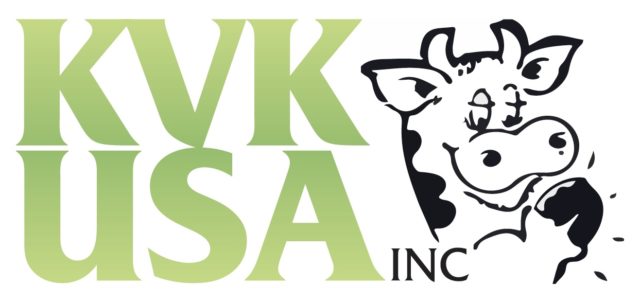The other day, after addressing a large agricultural group in St. Cloud, Minnesota, a young producer stated that the livestock cycle is still alive and well, despite comments from other attendees to the contrary. I agree that cycles exist in livestock, as well as weather and economics. Many segments of agriculture have recently been in a supersized super cycle which extends to much of rural America.
While the term “supersized” has been used by the press and others to describe meals at fast-food restaurants like McDonald’s , the same term can be applied to agriculture, where some enterprises and areas are “hotter than a pepper sprout” just like the old Johnny and June Carter Cash country and western song.
First, let us examine the history of commodity super cycles and how they have changed the landscape of agriculture and rural America. Let’s go back in the time machine to the decade of World War I. This was a period when mechanization of agriculture was flexing its muscles.
This, along with demand for agriculture and metals created by the Great War (as it was called) brought profits, wealth and technology to agriculture. Farms and ranches experienced growth and demanded credit. The Farm Credit System was created.
There was also growth in agricultural banking in this era, along with the establishment of the Cooperative Extension Service to assist farmers in education on production practices and management. The war ended with the Industrial Revolution in full gear.
The rise of manufacturing resulted in an exodus from rural areas and the roaring ’20s in suburban and urban America, while agriculture collapsed after the boom post-World War I. This downturn extended two decades, through the Great Depression until the start of World War II.
The second super cycle, just after the Korean War, was a result of postwar reconstruction in Europe and Japan, the building of the U.S. interstate system and the G.I. Bill, which sent many soldiers back to school for advanced education. This cycle influenced metal and agriculture prices, and resulted in the start of a 25-year bull market in agricultural land.
The third super cycle was the result of the Russian wheat deal, and agricultural policy oriented toward feeding the world. Dr. Earl Butz, Secretary of Agriculture, had the rally cry, “Plant fence row to fence row,” that sent agriculture into an expansion and growth frenzy.
This, coupled with oil and commodity price spikes, resulted in rapid inflation fueled by loose credit in the agriculture sector, resulting in the great land bubble toward the end of the super cycle.
Of course, this cycle ended with a bust when Federal Reserve chairman Volcker raised interest rates, tumbling agriculture into a major correction affecting profits and causing deflation of agricultural assets.
The current super cycle in agriculture, which covers much of rural America, started slowly, gained momentum and now has lasted a decade, which is 2.5 times longer than the previous super cycles in this century. This supersized super cycle is one of interconnectedness, convergence and alignment.
It has influenced the prices of oil, metals and agricultural commodities, and has placed a premium on regions and countries that produce these commodities. As a case in point, the economies of Canada, Australia and areas of the southern hemisphere have greatly benefitted.
Population growth and improved standards of living in emerging nations, particularly since the year 2000, have fueled demand. Alternative energy policy relating to ethanol and biofuels, the Federal Reserve’s stance on a low value of the dollar to encourage exports, and the suppression of interest rates have been the brew for both profits and appreciation of hard assets, such as land.
Oil, gas, minerals and water have become the commodities of choice worldwide, which has brought wealth to those with connections to agricultural and rural regions. Throw in the mix of low returns on competing investments, such as stocks and bonds, which have brought on growth of values on business balance sheets in agriculture.
Mother Nature has played a significant role throughout this cycle. Too much rain or major droughts in production areas of the world have resulted in commodity price spikes.
This, combined with “hot money,” (i.e. investors cashing in on short-run investments) has placed extreme volatility in both prices and inputs, resulting in a focus on risk and margin management.
The supersized super cycle has created long profit windows with minimal downturns in the grain industry. On the other side, resources have flowed out of the livestock sector, forestry and horticulture because of short profit windows and extended downturns.
Specialization has been rewarded on the grain side with biological, engineering and information technology in a systematic approach, rewarding the high-level manager.
A diversified approach in livestock has been beneficial in this super cycle as producers use complementary resources and output as a means of hedging risk (i.e. manure applied to land reduces commercial fertilizer cost.)
In this super cycle, the “R” word (regulation) relating to animal welfare, water, air and environmental quality initiatives, has resulted in time and capital being diverted to compliance.
The dangers of the supersized super cycle are very prevalent in the North American agricultural landscape. The following are just a few of the business killers lurking in the shadows of the correction.
• Inflation: While core and headline inflation, monitored by the Federal Reserve, are well within acceptable limits of 2.0 to 4.0 percent, inflation in agriculture and rural areas is rampant. Higher property taxes, input costs, cash rents, machinery and equipment values, and land values are increasing the fixed and variable cost structures of agriculture.
While profits and cash flow per unit were high early in the cycle, as the cycle matures many observe less earned income but more paper profits due to appreciation of land. This has been particularly true since 2007.
• The public: More Americans are disconnected from agriculture and rural America than ever before. As America urbanizes with fewer politicians from farm and rural areas representing agriculture, the perception of profits and wealth in agriculture is causing increased regulation and less government support during this super cycle.
• Age: The age spectrum in agriculture is a conundrum. More producers, particularly in the grain area with the advent of technology, are still actively farming in their 70s and 80s as owners, operators and landlords.
On the other end of the spectrum, those less than 40 years old (whether producers, agribusiness persons or lenders) were approximately 10 years old when the last downturn occurred in agriculture. Those under 30 have never experienced a downturn in agriculture.
To those in the middle of the age spectrum, transition, growth and evolution of agriculture is being accelerated by this super cycle. The key will be transferring this knowledge base to the next generation.
• Global issues: This supersized super cycle is truly global with interconnectedness of agriculture and rural America to global economic, political and social changes not seen in the previous super cycles. What is happening globally can impact one locally in strategies and management practices.
• Talent and expertise: Cheap labor was prevalent at the start of the super cycle. As the super cycle matures, it has become focused on talented labor that can be retained.
This will be a challenge as many younger Americans yearn for the lifestyle of urban and suburban America. The use of technology and the need for a highly skilled employment base comprised of lifelong learners will be an outcome of the cycle.
The supersized super cycle has shifted the paradigms of agriculture and rural America, creating challenges, chaos and opportunity. The super cycle will end. That is guaranteed.
How abruptly it will end and when the end will take place are unknown factors. Watch for the building blocks of the cycle to crumble away.
Strategize for both the short and long run using scenario planning to map out how you will operate and manage when the tide of prosperity ebbs. This will ensure you cannot only survive but take advantage of opportunities in the downside of the cycle. PD
Kohl is professor emeritus of agricultural finance and small business management and entrepreneurship in the Department of Agricultural and Applied Economics at Virginia Polytechnic Institute and State University.
—Excerpts from the December 31, 2012, quarterly edition of The Ag Globe Trotter written by Dr. Kohl and published in the Northwest Farm Credit Services’ Knowledge Center e-newsletter

David Kohl
Professor Emeritus
Virginia Polytechnic Institute and State University






